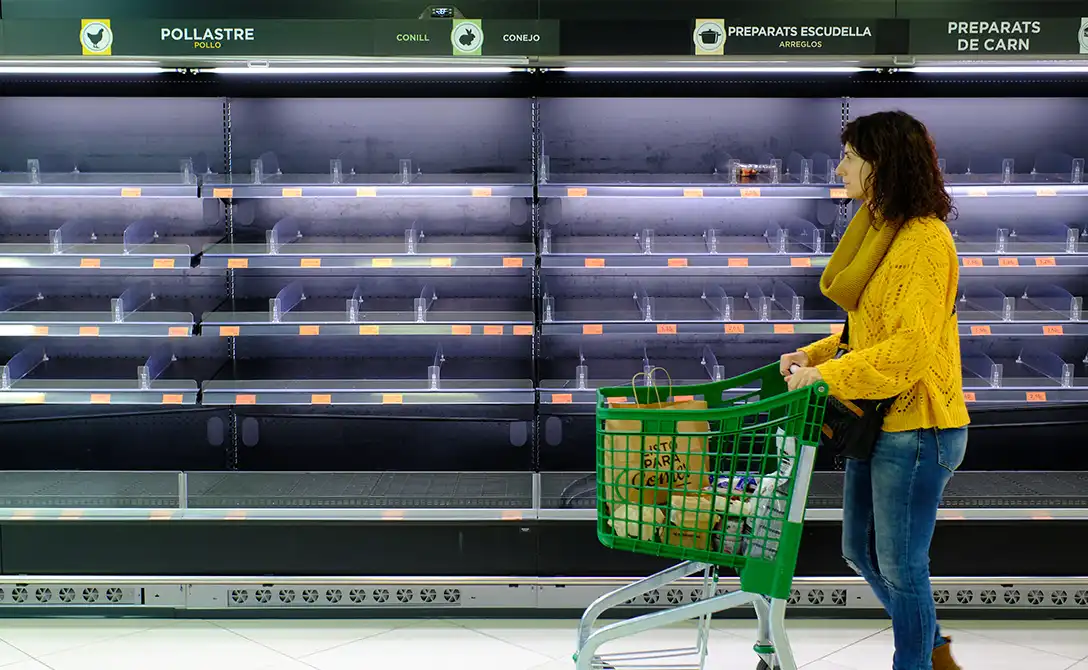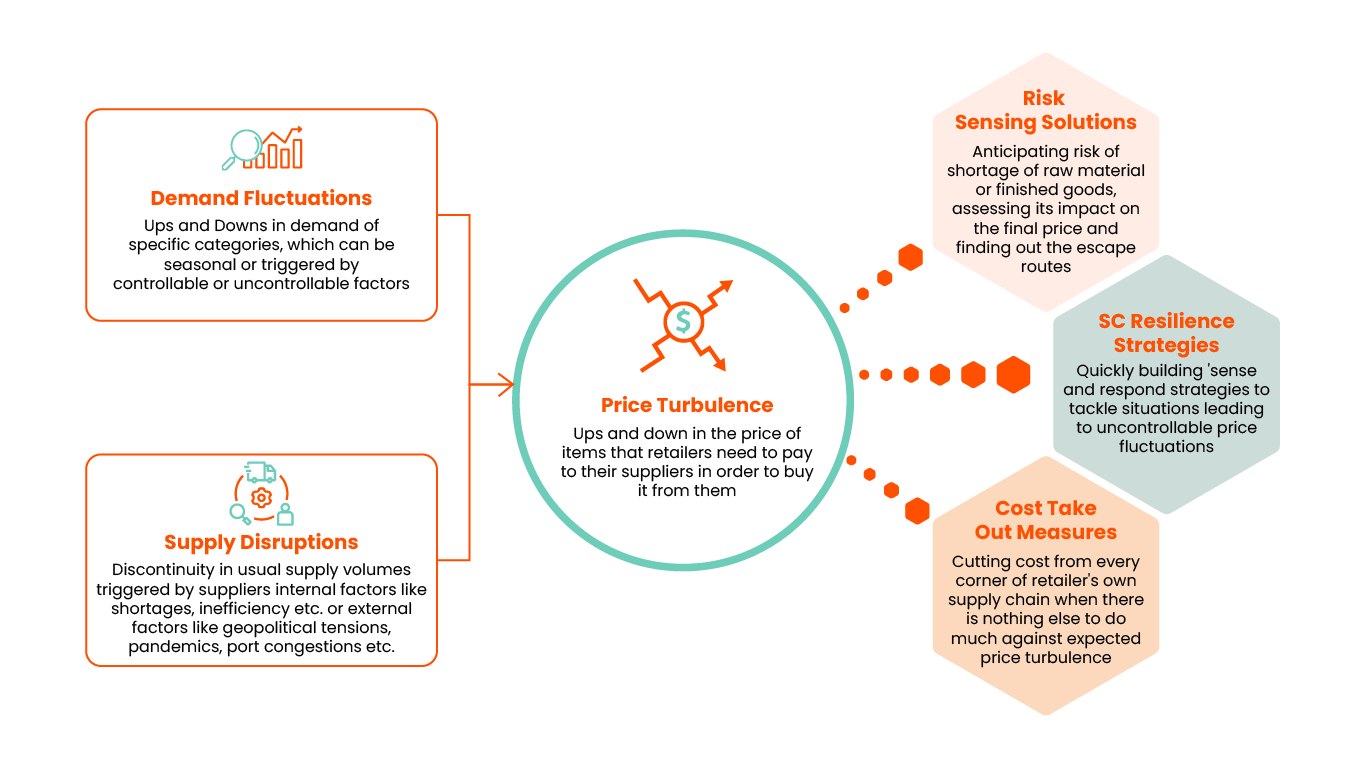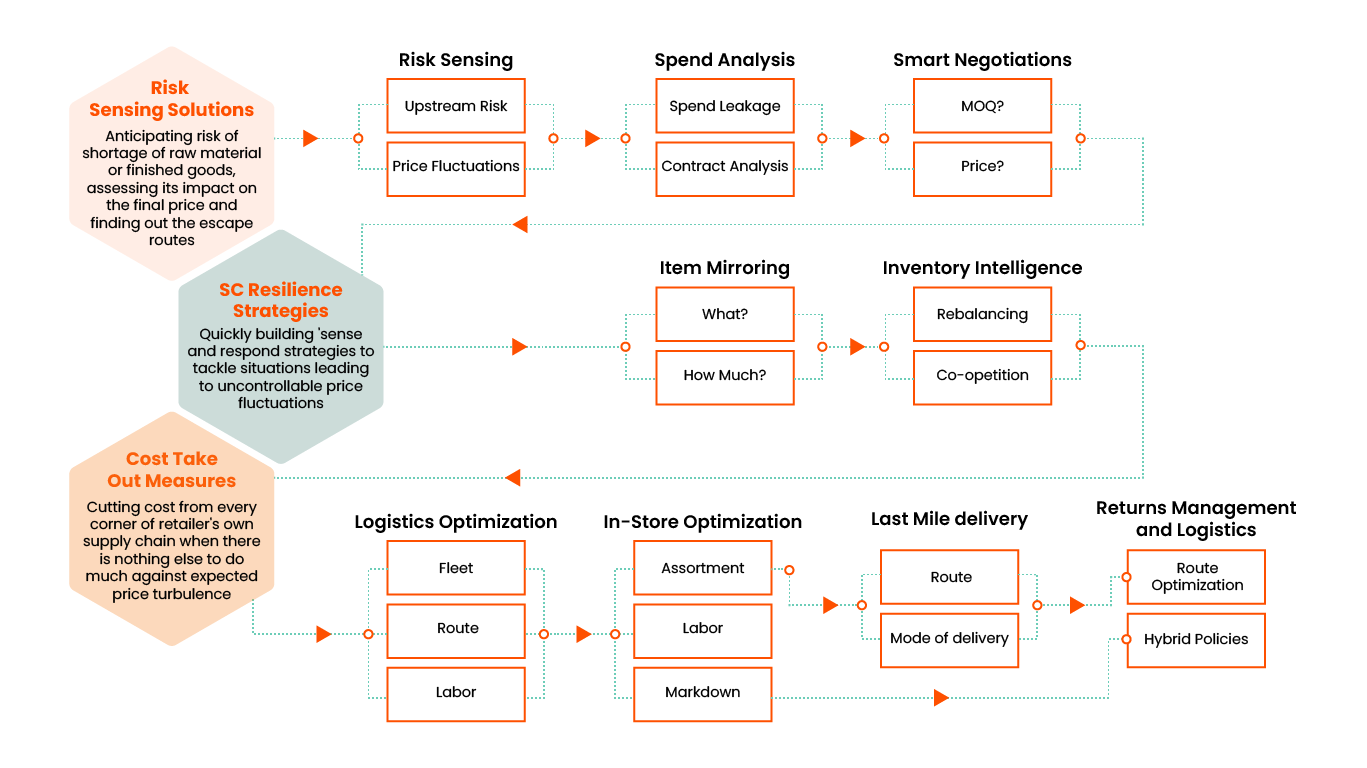
The global food industry is currently facing significant price turbulence for a variety of ingredients due to a combination of factors, including pandemic and epidemic events, recession speculation, trade tensions, and increased demand for certain products.
Impact of supply chain disruptions on global food industry prices amid COVID-19 and other factors
Supply chain issues have been a major contributor to the current price turbulence in the global food industry. The COVID-19 pandemic disrupted global supply chains, leading to shortages and increased demand for certain products. This triggered price increases for certain ingredients as well as delays in the delivery of goods. Even though most economies are coming out of pandemic-related issues, other factors like global economic slowdown, geopolitical tensions, trade route restrictions, and congestion also serve as significant roadblocks.
Trade tensions between countries have also disrupted global supply chains, leading to shortages and price increases for certain ingredients. For example, tariffs imposed by the US on imported steel and aluminum have led to increased costs for food processors and manufacturers, resulting in higher prices for consumers. Another example is the shot-up prices of wheat and other grains due to the war between Russia and Ukraine, two major wheat-producing countries. Similarly, the price of palm oil and soybean oil, used in many processed foods, has been affected by related supply chain issues.
All of these factors impact the overall procurement cost for an FMCG or food processing company by at least 5-7%, passed on to the retailers as the buyers of these finished goods, and eventually, to the end consumers who are now actively seeking the lowest price platform for their favorite foods. Consumers appear to prioritize their taste buds above their preferred retailer, regardless of whether it is offered at the lowest price online or offline, at a nearby convenience store, or at a distant big box retailer. Certainly, a section of the population is also considering switching to a different brand, be it a private label, while sticking to their preferred retailers. But retailers can’t simply sit and hope to have this fraction grow.
Clearly, supply chain issues have a major impact on food prices, which is felt by industry players and consumers alike. And very soon, retailers will have to find an escape route from this global price turbulence to be able to maintain their margins without losing their loyal customers to the retailer next door who has figured out ways to cut costs from every nook and corner of its supply chain network and related operations.
Mitigating price turbulence in the global food industry through data analytics and AI: Advanced risk-sensing, supply chain resilience, and cost take-out measures

Now some of the things a retailer can do are using data analytics and artificial intelligence (AI), which can play a key role in helping to mitigate the impact of price turbulence in the global food industry. For them, advanced risk-sensing solutions, supply chain resilience strategies, and cost-take-out measures are the escape routes from the global price turbulence.
Data analytics can track and analyze supply chain data in real-time, providing insights into potential disruptions and enabling companies to respond proactively. For example, advanced risk-sensing solutions can monitor weather patterns and predict potential crop failures, allowing companies to adjust their sourcing strategies accordingly. Similarly, data analytics can monitor trade tensions and predict potential tariffs, allowing companies to adjust their import and export strategies.
Another area where AI can be applied is predicting consumer demand and making the supply chain more resilient. By analyzing consumer data and trends, retailers can adjust their sourcing strategies to meet consumer needs, reducing the risk of overstocking inventory at higher price points. These solutions can help retailers reassess their item mirroring norms and rebalance their inventory across warehouses or suggest co-opetition with peers and suppliers.
Several cost-take-out measures can also help optimize supply chain operations, reducing costs and increasing efficiencies. For example, AI solutions can optimize logistics and transportation fleet size, reducing overall transportation costs. They can also maximize delivery routes and predict delivery times, allowing retailers to adjust delivery schedules and reduce the risk of delays while keeping costs lower. AI can also estimate the permanent versus contracted labor required at warehouses and stores to support smooth and cost-effective operations. Finally, some next-generation solutions can even help with fuel and capacity hedging recommendations to cut costs or encourage third-party collaboration to improve SLAs while keeping costs at a minimum and leveraging economies of scale.

Bottom line: Data analytics and AI are the way forward for mitigating the impact of food price turbulence
Overall, seamless information flow across connected data analytics and AI solutions can play a key role in identifying cost-saving opportunities in supply chain operations and reducing the impact of food price turbulence. These technologies can help retailers in supplier management and consumer demand prediction and optimize inventory management as well as logistics and transportation, which can lower costs and improve customer satisfaction.
Ultimately, the current situation around the global price turbulence of food ingredients is complex, with various factors at play. The food industry is closely monitoring these developments and working to mitigate the impact on consumers. However, prices for certain ingredients will likely remain volatile in the near future, and retailers will have to roll up their sleeves and engage in more smart and connected solutions to provide the same shopping experience at the same price point.

AUTHOR - FOLLOW
Shubhankit Verma
Senior Manager, Supply Chain Practice
Topic Tags




